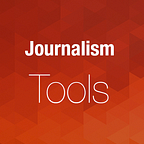Is Your Newsroom Future Proof? (Part 1)
40 Questions & 12 Trends for the Future of Journalism
Introduction
Almost two years ago I started Journalism Tools as a way to keep up with the never-ending stream of new tools and resources for journalists and newsmakers. Since then I have tested thousands of new apps and tools and read even more articles about the changing media industry. In doing so I have discovered how much these new tools and technologies exemplify and predict the disruption of our business. Pointing towards new habits and shaping new behaviors, these apps and platforms are not just temporary frills, but indicators of the seismic shift that makes this the most exciting but also most confusing time to be a journalist.
As a thank you to my 15.000 followers I have tried to boil some of my insights down to 12 trends shaping the future of journalism and 40 questions that could help newsrooms and journalists to frame the challenges ahead.
This is part 1. You can read part 2 here.
Ezra Eeman, Founder Journalism Tools.
“For the first time in 200 years news publishers are not in control of how news is created and distributed.” emily bell
Big online players (Facebook, Google, YouTube) and new channels (Snapchat, Whatsapp, Wechat,…) are becoming more and more the front and center of the news experience.
At the same time these new giants are also increasingly in control of the distribution of information.
Additional reading: Tech is eating Media. Now what? by John Herrman
Questions
- What is your position towards these new ‘news’ media ?
- Should you go where your audience is or stay in control of your distribution?
- Should you be a maker of content or rather a master of distribution?
- How do you get a seat at the table of these new ‘news’ media?
- Who is taking the responsibility for publication on these new platforms?
- Who is controlling what the audience will see? You or an algorithm?
- ….
The relentless rise of smartphones, tablets en wearables creates an expectation of immediacy with the audience. They want their news always and everywhere.
At the same time news brands are developing distinctive mobile experiences through apps or social media.
Questions
- In what ways does the mobile revolution force you to formulate a new news proposition?
- How does mobile change news gathering (smartphone reporting), selection (crowdsourced verification), distribution (always, everywhere, as it happens, near you,..)?
- …
”Citizen Journalism: When the people formerly known as the audience employ the press tools they have in their possession to inform one another.” Jay Rosen
Smartphones with high-res camera’s are ubiquitous, the speed of data connections is rising and at the same time the cost of data connections is dropping. Everything is set for giving the public a new role in the journalistic process. So what will it be?
Questions
- Which role do you give the audience in the collection of news?
- What interactions before, during and after the news process are important?
- How do you handle UGC? (cfr rights, liability, privacy, reliability,..?)
- …
“In a world where everyone can report on news, there is a lot of noise.” Alexis Ohanian
With an infinite number of sources and newsmakers there is an increasing need for a clear and reliable news selection .
At the same time social media has opened a vortex of uncontrolled content. User generated stories and social shared images pour out the web at an ungraspable speed. New services and tools aimed at identifying sources and corroborating stories highlight the enormous task verification and curation of news has become for journalists and newsrooms.
Questions
- Which sources will the public trust in the future?
- What are determining factors? How can you leverage trust?
- How do you position yourself: speed < > accuracy?
- How can you sharpen your news proposition by curation?
- What is your role in filtering information? What are your criteria?
- How transparent is your news process? (selection, sources, methodology)
- …
New journalistic initiatives rethink formats to explain the news and bring background stories in an increasingly complex world. They fill the need to break data down into clear patterns and bring coherence in the growing streams of information.
Questions
- How do you bring more context and background in an atomized and fragmented news landscape?
- How can you rethink background journalism in order to have a better fit with the questions news users have?
- How do you give ‘meaning’ to information by establishing patterns and coherence in growing data flows?
- Which role do you have in opening up and interpreting (public) data for citizens?
”In an age where information is everywhere journalist have to do more than just passing information on. News has to connect, broaden, offer solutions and help citizens to make informed choices for themselves, their family, their community and their world.“ Jeff Jarvis
- What role in society has news/your newsroom? (Watchdog, witness, fact-checker, explainer, facilitator, debate, rolemodel, community builder, service…?)
- What service do you offer?
- How do you learn more about the needs, wishes and values of your reader, viewer… ?
- Which areas or themes do you have to cover based on audience insights? What products do you have to make?
- …
This is the end of part 1. Read part 2 here.
For more posts like this, follow Thoughts On Media.
